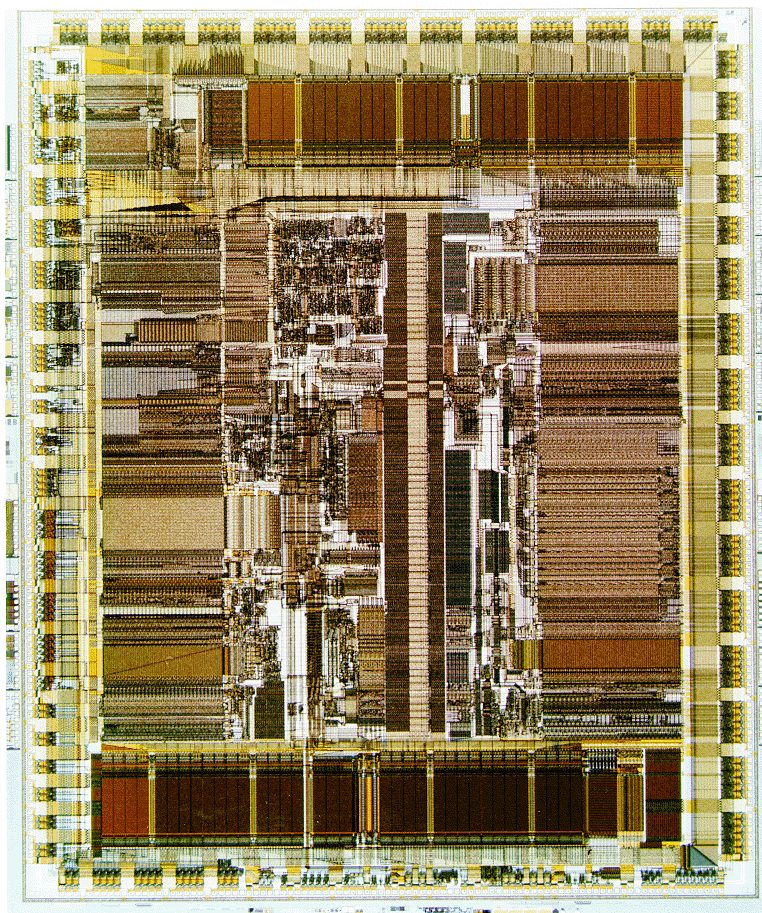
This a typical superscalar microprocessor. (It wasn't the first superscalar - that was one of the Intel i960 series.) It can issue up to N instructions per clock, where N=2 in this case. For example, it could do an Add and a Branch: or, it could do an Add and a Floating Add.
That may sound easy, but in fact it causes some very complicated problems. For example, doing two Adds at once might be OK, or it might be prohibited. It depends on details, such as whether one Add outputs a value that the other Add needs as an input.
This particular chip is the first chip in DEC's 64-bit Alpha series. It initially ran at 200 MHz, which was considered very impressive in 1992. The structure across the top is an 8 KB data cache: the structure across the bottom is an 8 KB instruction cache. The right hand side is the floating point unit. This chip is 1.39 x 1.68 cm and contains 1.68 million transistors. It was built with 0.75 micron lithography, and has three metal layers.